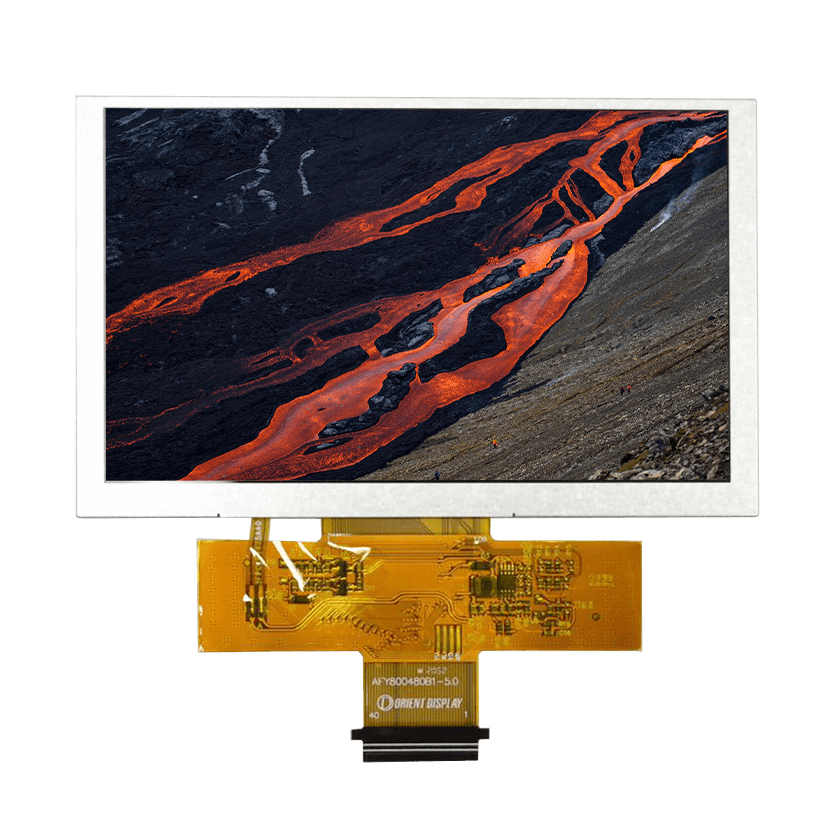A resistive touch screen is made of a glass substrate as the bottom layer and a film substrate (normally, clear poly-carbonate or PET) as the top layer, each coated with a transparent conductive layer (ITO: Indium Tin Oxide), separated by spacer dots to make a small air gap. The two conducting layers of material (ITO) face each other. When a user touches the part of the screen with finger or a stylus, the conductive ITO thin layers contacted. It changes the resistance. The RTP controller detects the change and calculate the touch position. The point of contact is detected by this change in voltage.
Pros of Resistive Touchscreen
One of the main reasons why resistive touch panels still exist is its simple manufacturing process and low production cost. The MOQ (Minimum Order Quantity) and NRE (Non-Recurring Expense) are low. The driving is simple and low cost. The power consumption is low too. Resistive touch panel also immune to EMI well. Although it can’t use cover lens at the surface, the overlay can make it flexible for designs.
Resistive touchscreens offer an unparalleled level of durability. Manufacturing companies, restaurants and retailers often prefer them over other types of touchscreens for this very reason. With their durable construction, resistive touchscreens can withstand moisture and stress without succumbing to damage.
You can control a resistive touchscreen using a stylus or while wearing gloves. Most capacitive touchscreens only register commands performed with a bare finger (or a special capacitive stylus). If you use a stylus or a gloved finger to tap the interface, the capacitive touchscreen won’t respond to your command. Resistive touchscreens register and respond to all forms of input, though. You can control them with a bare finger, a gloved finger, a stylus or pretty much any other object.
Cons of Resistive Touchscreen
The biggest advantages for resistive touch panel are its touch experience and clarity. It can only be used for single touch, no gestures or multi-touch. False touches can be generated if using two or more fingers to touch it.
Resistive touch panel’s transparency is relatively low. In order to prevent Newton rings or fingerprint mark, sometimes AG(anti-glare) film has to be used to make it look more smoky. Optical bonding can’t be used for RTP. The surface of resistive touch panel is soft and easily get scratched.
There are still a few potential cons associated with resistive touchscreens. When compared to capacitive touchscreens, resistive touchscreens aren’t as sensitive. They are still responsive, but you’ll have to tap or press the interface with greater force for a resistive touchscreen to recognize your input.
Resistive touchscreens usually offer lower display resolutions than capacitive touchscreens. Granted, not all applications require a high-resolution display. If a touchscreen is used as a point-of-sale (POS) system in a retail environment, for example, resolution shouldn’t be a concern.
If you have any questions about Orient Display capacitive touch panels. Please feel free to contact: Sales Inquiries, Customer Service or Technical Support.



